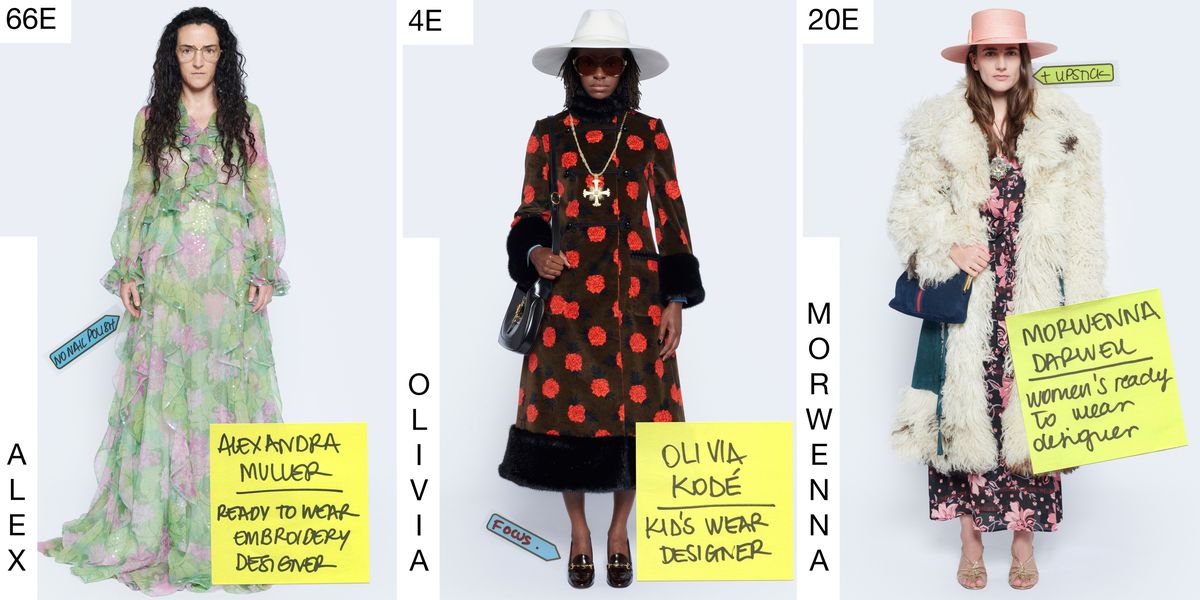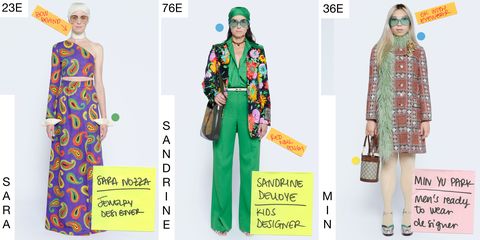Transparency is top of mind of Alessandro Michele. This morning, the creative director of Gucci released a video of his latest collection, titled Epilogue, which serves as the final chapter of his “trilogy of love.” In the 12-hour livestream, the Italian brand filmed a sizable crew at Palazzo Sacchetti in Rome, Italy, where slowly but surely, all were working tirelessly to build Michele’s vision. And for him, this meant changing the rules of the fashion industry, slowing down the process, and focusing on the labor that not only goes into making the clothes, but also the images created to sell them. To wit: What goes on behind the scenes is just as thrilling as the unveiling of the final product—if not more.
This outlook (or three-part fairy tale, as Michele calls it) began in February during Milan Fashion Week, when he staged his show at the brand’s headquarters, formally known as the Gucci Hub, inviting guests on a virtual behind-the-scenes tour. “On that occasion, I wanted to celebrate the magical ritual of the fashion show: a sacred and unrepeatable liturgy through which creative thinking goes public and offers itself to the interpretation of a community of emancipated spectators,” he said in a statement. “I wanted to unveil what lies behind the curtains of this ritual.”
Next up in the trilogy was the unveiling of that season’s ad campaign, in which he decided to abdicate his role of “obsessive director,” letting the models create their own images. “It was a radical experimentation in which I let myself go with the idea that beauty can appear, unpredictably and wonderfully imperfect, through the absence of control.”
This content is imported from YouTube. You may be able to find the same content in another format, or you may be able to find more information, at their web site.
And for the epilogue, which was presented on the final day of Milan’s first-ever digital fashion week, Michele opened the curtain even further, allowing viewers to see all facets of production, from the security check to staging of lights and cameras to models, who were all made up of his design team, getting glammed up.
“It’s a process of role reversal, once more,” he said. “The distances shorten. The creative act becomes exhibition praxis. The inside projects itself outside. The invisible takes its shape, radiating through self-combustion. More than that. This time, my analysis on the mechanisms that regulate the world of fashion intensifies: This reshuffling will be portrayed through an unusual perspective. For a whole day, anybody will be able to investigate, thanks to suitably arranged cameras, the process through which the design office will embody Gucci’s new advertising campaign.”
Still, with all these changes in virtual representation, Michele has not deviated from his aesthetic—one that has made Gucci one of the buzziest and most successful brands in the market. His fascination with vibrant mismatching patterns, bold colors, and rich textures return, this time with a greater emphasis on the bohemian styles of the ’60s—albeit with a luxurious bent. Think Elizabeth Taylor and Richard Burton in St.-Tropez. There were long floral printed dresses with bug-eye sunglasses, an asymmetrical frock in paisley accessorized with a head scarf, a safari jacket over a peasant blouse and A-line skirt topped off with a turban, and a range of menswear that adhered to same vibe, bucking gender tropes.
Indeed, Michele’s issue with the fashion industry has little to do with the output, but the frequency in which it is delivered and disseminated by the masses. And with the Epilogue Collection, he is essentially letting the world know that he is done following fashion’s prescribed system and moving ahead according to his own machinations.
This content is created and maintained by a third party, and imported onto this page to help users provide their email addresses. You may be able to find more information about this and similar content at piano.io

